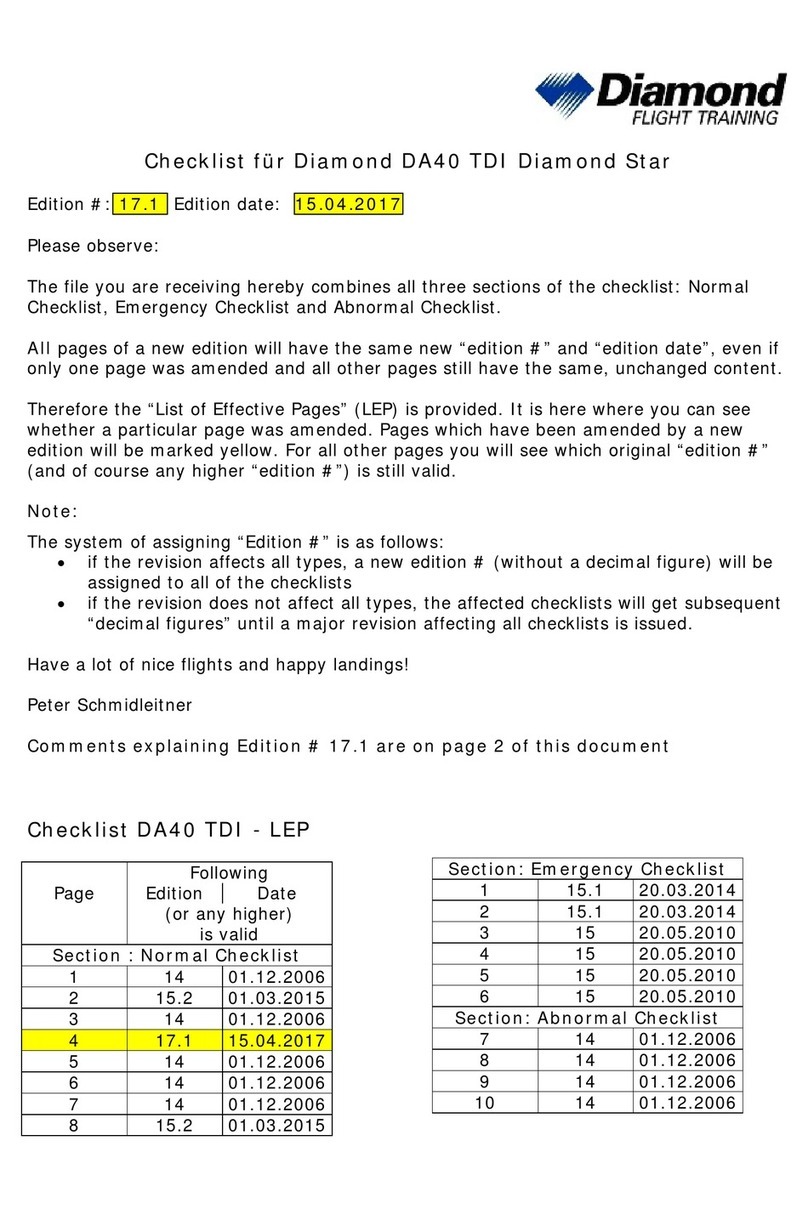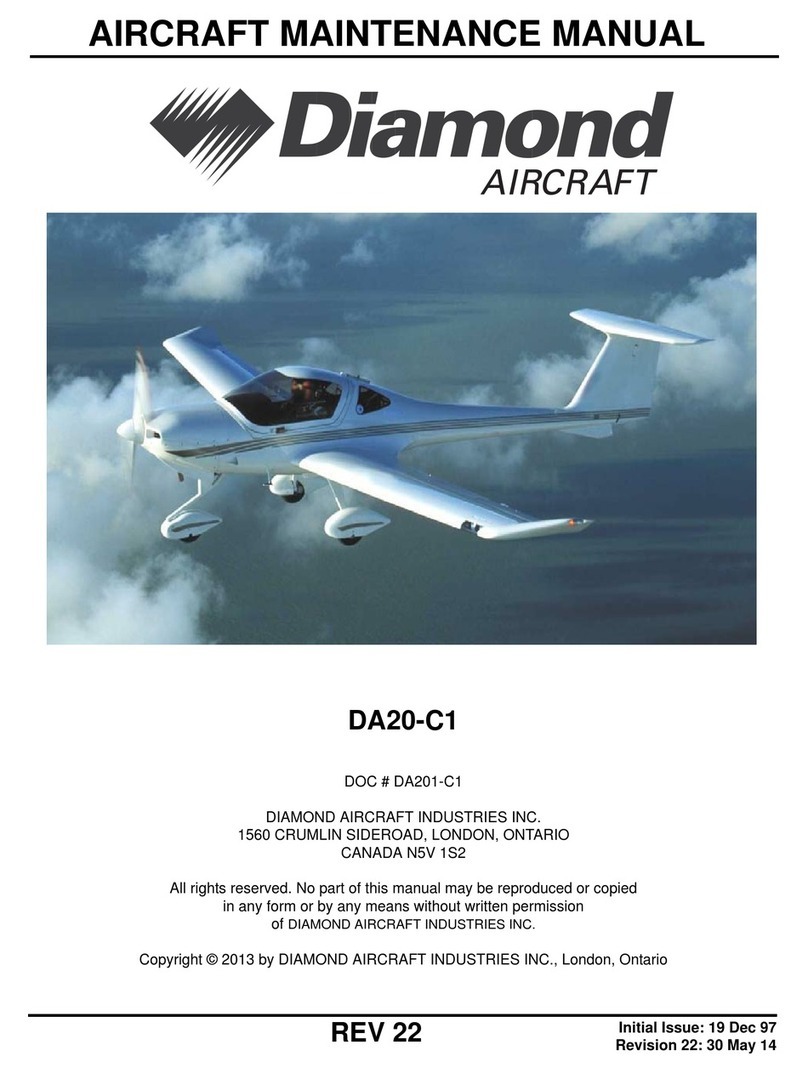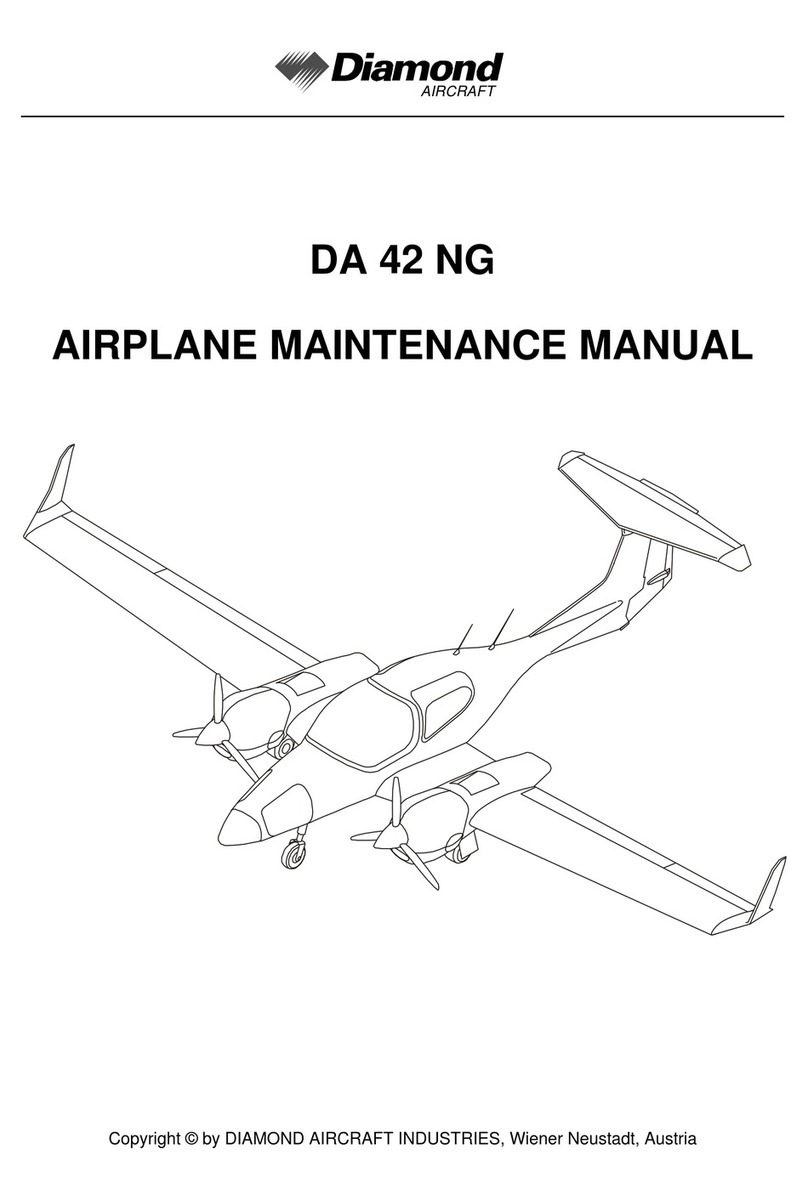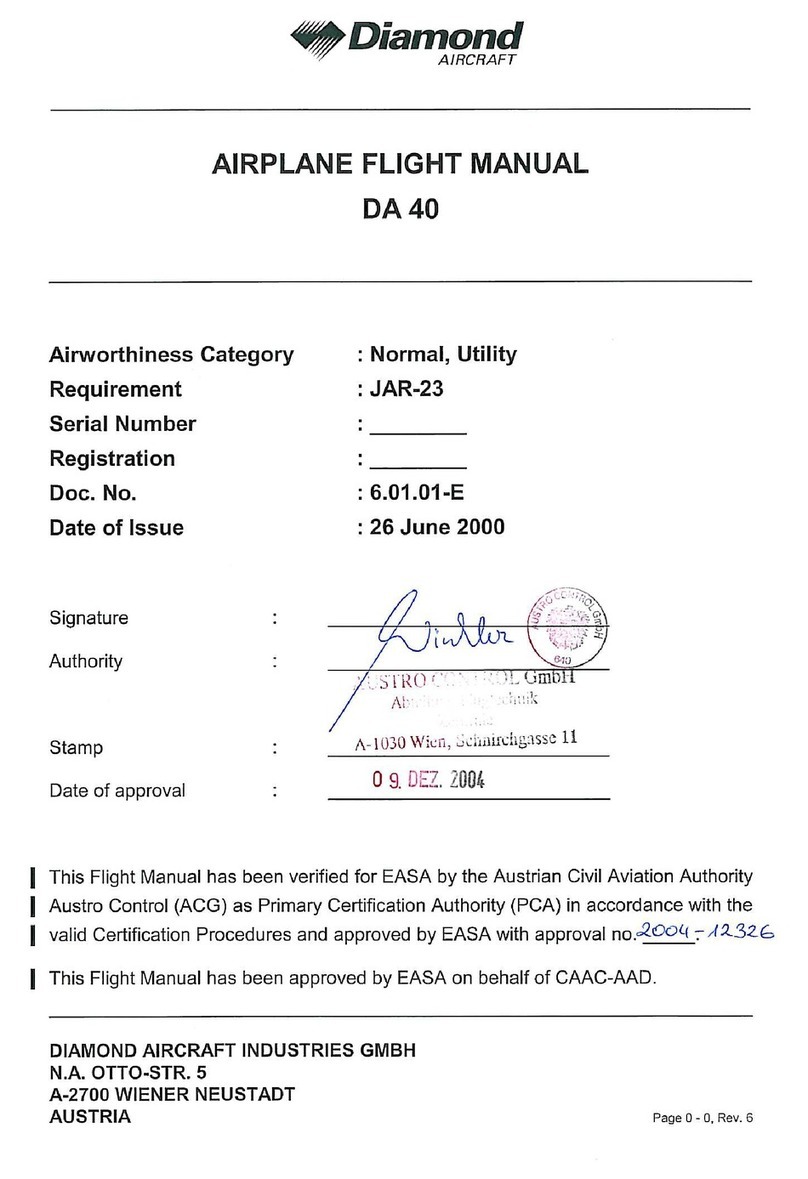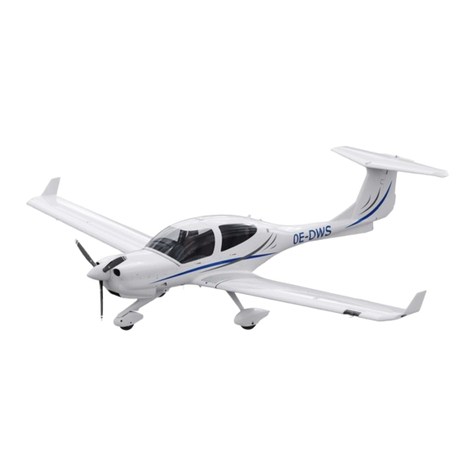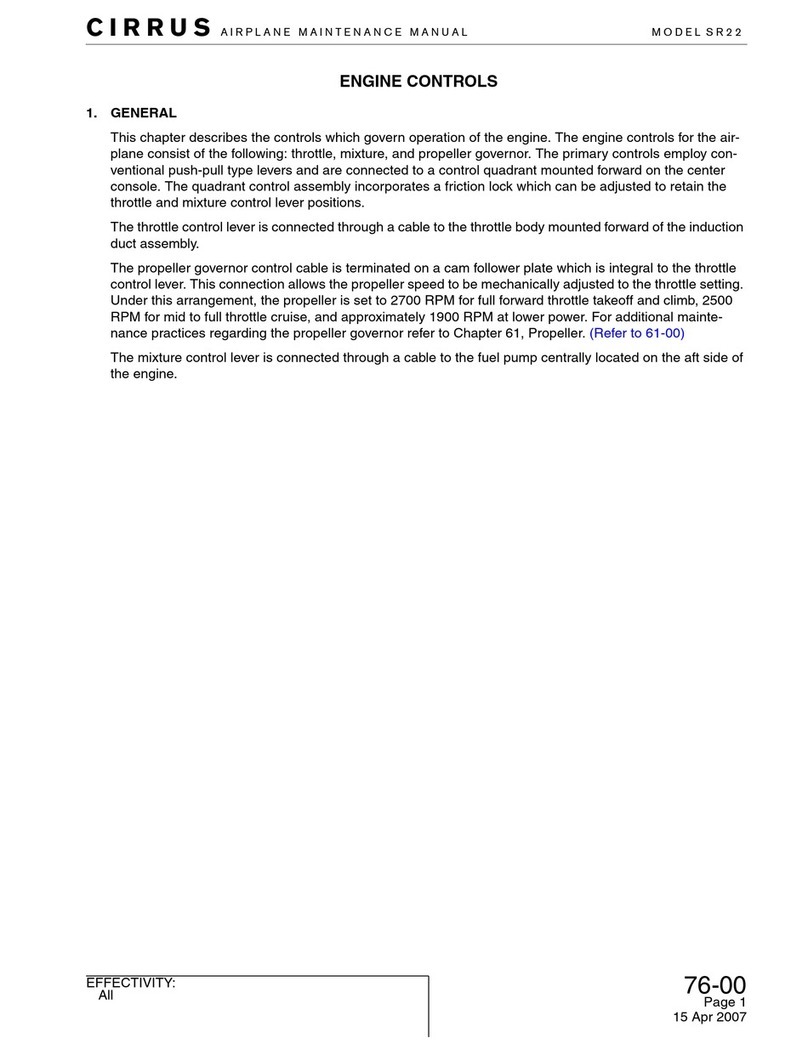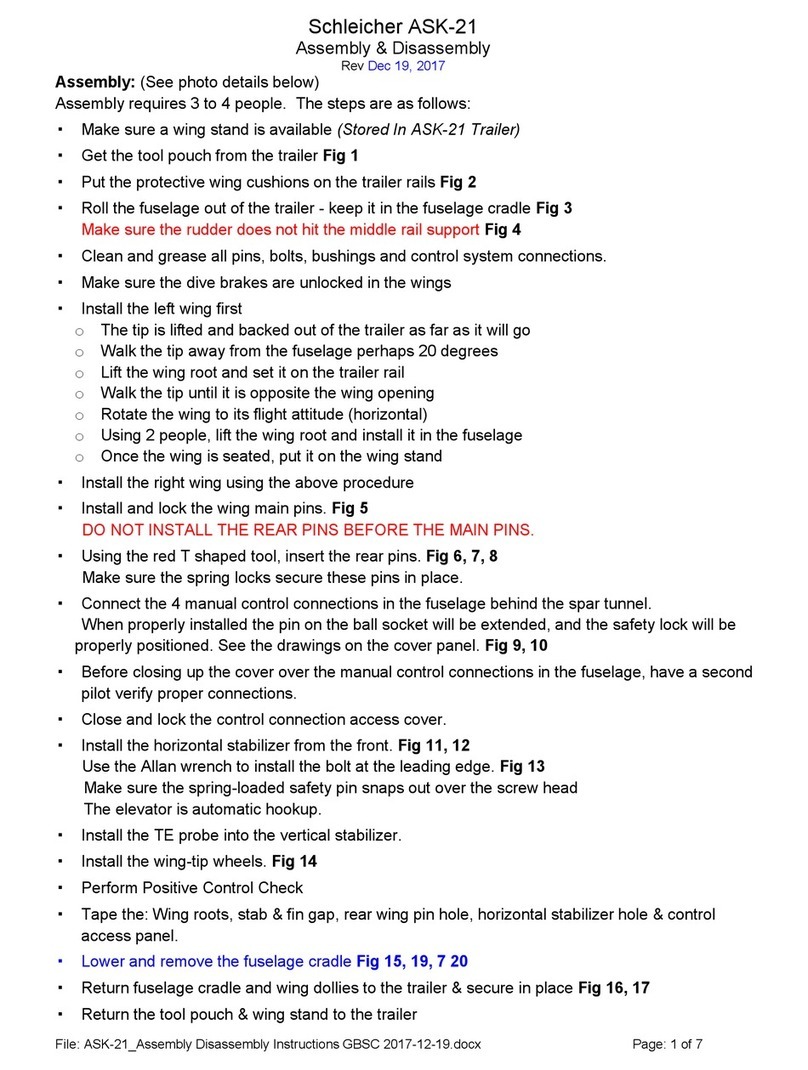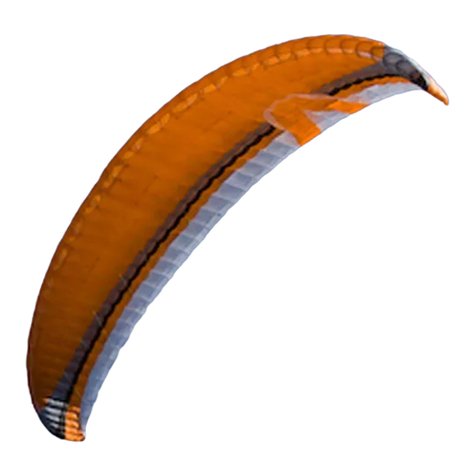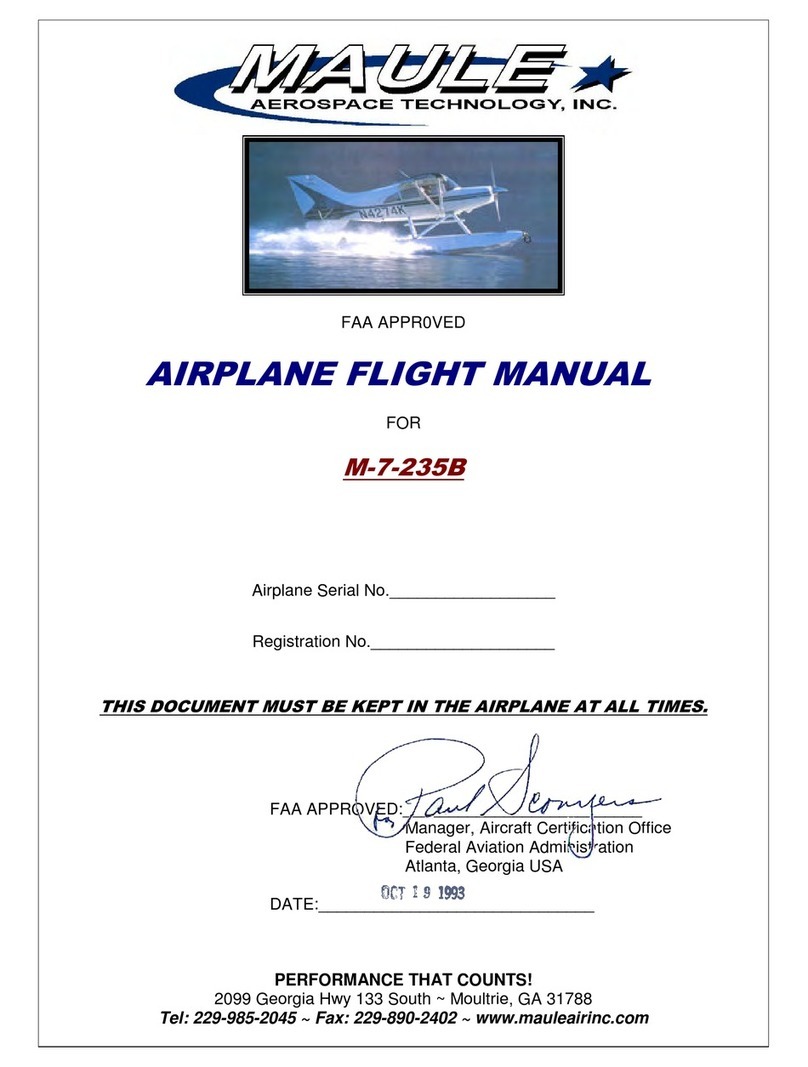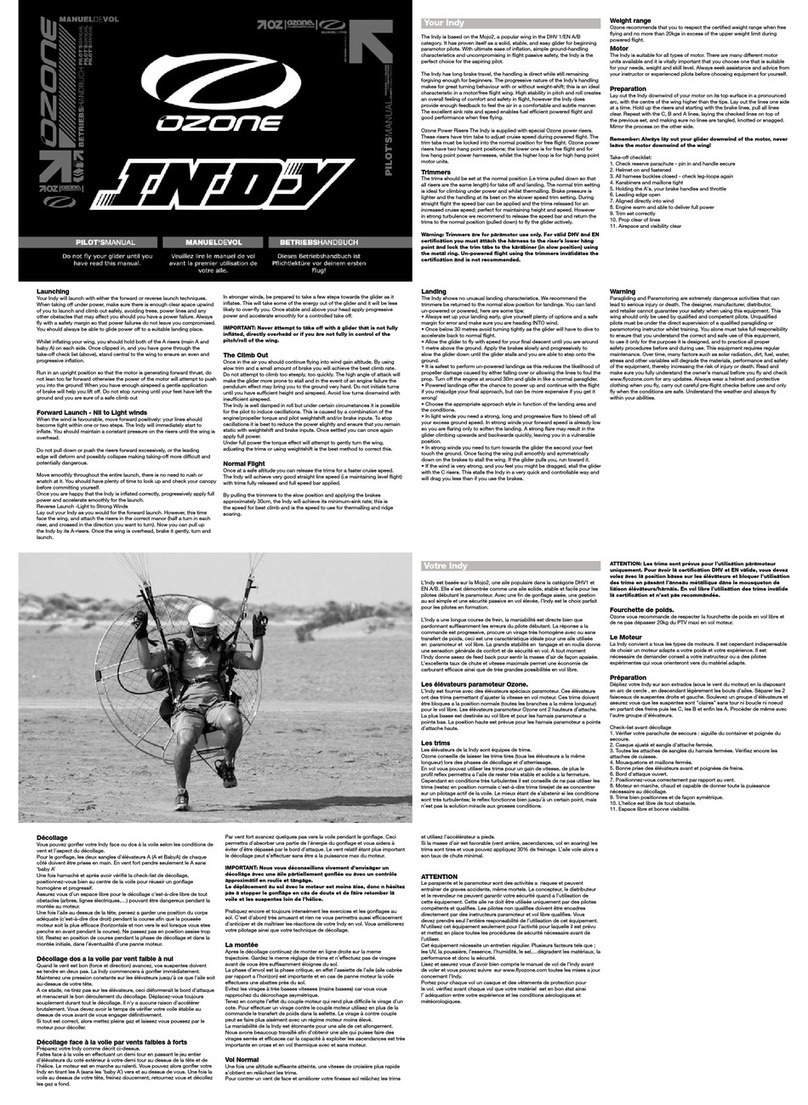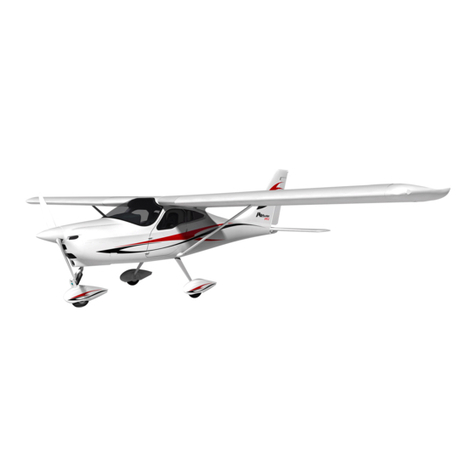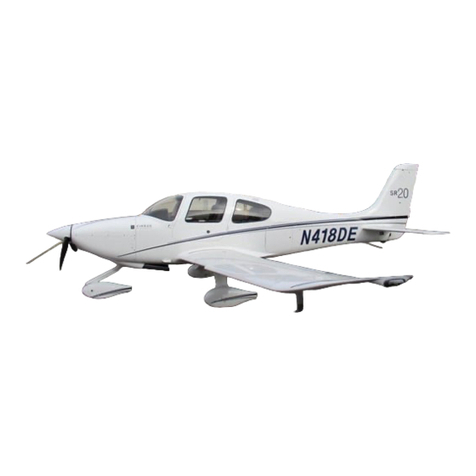
Page 1
Rev 21 51-00-00
Standard Practices - Structures
DA20-C1 AMM
DA201-C1 14 Jan 13
STANDARD PRACTICES - STRUCTURES
1. General
This chapter describes only the basic data about the structure.
The DA20-C1 aircraft is a single-engine, low-wing monoplane of composite construction. It has a 'T' tail.
It also has a fixed tricycle landing gear with a nose wheel that can caster.
The fuselage has a glass fiber skin of semi-monocoque construction with bulkheads and stiffeners.
The tapered cantilever wing has an I-spar. The spar caps are carbon fiber rovings. The wing skin is a
sandwich of Glass Fiber Reinforced Plastic (GFRP) with a rigid foam core. Each wing attaches to the
fuselage at three places.
The vertical stabilizer is part of the fuselage structure. It has a spar near the rudder hinge line and a full
laminate skin. The horizontal stabilizer, elevator and rudder have GFRP skins with rigid foam cores.
The ailerons and flaps have GFRP/CFRP skins with rigid foam cores.
The acrylic canopy has a frame made from carbon fiber laminate.
An epoxy filler with a polyurethane paint protects the aircraft against moisture and ultraviolet rays.
2. Structural Classification
When you do a repair, you must identify the area of the structure (Refer to Figures 1, 2, and 3). If the
damage is larger than the permitted repair, you must ask the manufacturer for advice.
A. Limited Area 1
In this area repairs are permitted on external skin damage up to 250 mm (10 in) in diameter.
B. Limited Area 2
In this area repairs are permitted on external skin damage up to 50 mm (2 in) in diameter.
C. Prohibited Repair Area
Only the manufacturer (or an approved repair facility) can do repairs in this area.
